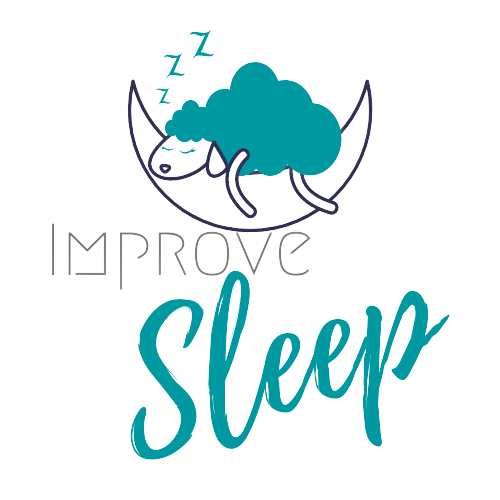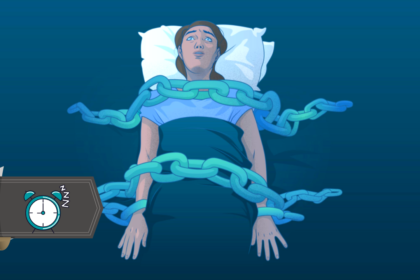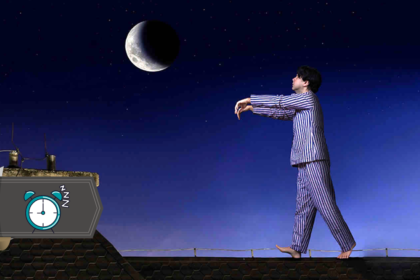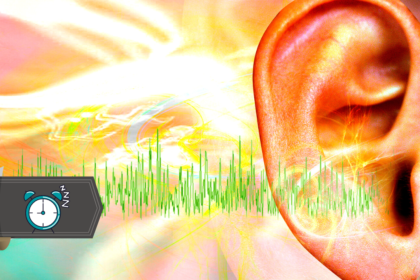Sleep is vital in human lives, and lack of it may not sit well with the entire body system. The body can easily get overwhelmed by our daily activities, and sleep is the best way to get it rested and ready to go again.
Not only does the body profit from this routine, but the mind can also get sharpened during sleep. It is true that the brain functions 24 hours a day and does not sleep, but it indulges in essential activities that revitalize it while we sleep.
The benefits of sleep to our body and mind are undisputed, and the average human spends more than half of their life sleeping. Well, since we spend so much time with our eyes closed, it is only ideal that we make the most of it.
However, many factors can disrupt our sleep, making us have lesser than the body needs, while others make it difficult to fall asleep. Considering the benefits of sleep to the body, you need no telling how devastating a lack of good sleep can be.
One of these factors is restless leg syndrome, and its effects can be pretty disturbing. This article will explain everything you need to know about restless leg syndrome and how it affects sleep.
What is Restless Leg Syndrome?
A restless leg syndrome, or RLS for short, is a medically diagnosed condition characterized by an irresistible urge to move the legs. This condition often gets triggered when the body is at rest, so patients will most likely feel this urge while sitting or laying down.
While restless leg syndrome is rare, its effects are not so friendly and can leave patients feeling restless. The urge may be likened to an addiction, but it may not be resistible in this case.

Of course, the primary symptom of this condition is the irresistible urge to move one’s legs, which often affects both sides of the body.
Since it is more concerned with the limbs rather than the skin, the urge can extend to the arms but only on rare occasions. Although this condition is often medically diagnosed after several tests, some of its apparent symptoms include;
- A sensation that begins when you take a resting position.
- The sensation can often get more intense in the evening.
- Constant leg twitching even during sleep (on severe conditions).
- Movement can provide temporal relief.
- The urge can often come with slight aches and itching in your leg.
What Triggers Restless Leg Syndrome?
It is often difficult to pinpoint the exact cause of restless leg syndrome. Recent research has suggested that it is linked with an imbalance in dopamine, a brain chemical that sends signals to the muscles.
However, several factors have been known to trigger this condition, including;
Iron Deficiency: One of the dominant causes of adult restless leg syndrome is a lack of sufficient iron in the blood. Iron deficiency anemia often affects melatonin production and restricts the brain’s communication with muscles.

Depression: Depression may not be a direct cause of RLS, but tests have shown that they are significantly related. It has also been found that depression makes the symptoms of restless leg syndrome more evident and long-lasting.
Hereditary: A study of patients’ genes has shown that RLS is fairly hereditary, especially for patients under 40. Also, about 70% of affected individuals have reported a direct link with one or more persons of similar condition.
Pregnancy: Pregnant patients may experience symptoms of RLS more often for two reasons. Firstly, the drop in folic acid and iron production during pregnancy is a significant factor. Secondly, there are indications that a rise in estrogen levels can also trigger these symptoms.
Does Restless Leg Syndrome Affect Sleeping?
Yes, restless leg syndrome can be directly responsible for lack of sufficient sleep or difficulty falling asleep. Patients report a severe deviation in their sleep routine, which is expected since resting postures can trigger the condition.
RLS is primarily characterized by the urge to move one’s leg rapidly, and it is no news that sleep is difficult to come by when the body is in motion. Hence, the lack of sleep among patients can lead to insomnia in severe circumstances.

This condition may become dominant at night because RLS is related to a low level of dopamine, meaning the muscles become less controllable.
Hence, keeping the production of this chemical at a minimum at night since it naturally reduces after sunset. In short, patients diagnosed with chronic restless leg syndrome find it difficult to enjoy a good night’s sleep, while others may need medications to improve sleep.
Best Treatments for Restless Leg Syndrome
The sad truth about RLS is that there is no cure for the condition.
However, patients can find solace in the fact that the condition can be managed, and treatments can provide short-term relief. Knowing the best remedy to implement can help you prevent and control symptoms of restless leg syndrome.
Here are some treatments to help you get immediate relief from these symptoms.

- Exercise: Restless leg syndrome is associated with relaxed posture taken up while sitting or laying down. Hence, the best solution is movement, and exercise is a great fit. Light exercises like walking, jogging, and yoga can provide immediate remedies for RLS symptoms.
- Warm Baths: Another excellent short-term solution for restless leg syndrome is taking a warm bath. Whenever you feel the symptoms of RLS, you can quickly get relief by soaking in a warm bath and gently massaging your legs. You can also apply hot or cold packs on your legs as an alternative when you can access a hot bath.
- Medications: Your doctor may prescribe drugs that promote dopamine production and reduce nerve pain. These drugs can help boost your brains control over your muscles and even improve sleep.
Conclusion
Restless leg syndrome is a medical condition characterized by an irresistible urge to move your leg. It is more dominant among older adults but can also affect younger people. The condition is often made more frustrating because it can actively disrupt sleep.
This article has explained restless leg syndrome and how it affects sleep while providing quick short-term remedies for the symptoms.






[…] This condition causes involuntary movement in the legs during resting conditions and sleep. […]
wonderful points altogether, you just gained a brand new reader. What would you recommend in regards to your post that you made some days ago? Any positive?
Valuable info. Lucky me I found your website by accident, and I am shocked why this accident did not happened earlier! I bookmarked it.
Thanks for another excellent post. Where else could anyone get that type of info in such a perfect way of writing? I’ve a presentation next week, and I’m on the look for such information.
It抯 really a great and useful piece of information. I am glad that you shared this useful info with us. Please keep us informed like this. Thanks for sharing.
Wow! Thank you! I always needed to write on my site something like that. Can I implement a fragment of your post to my website?